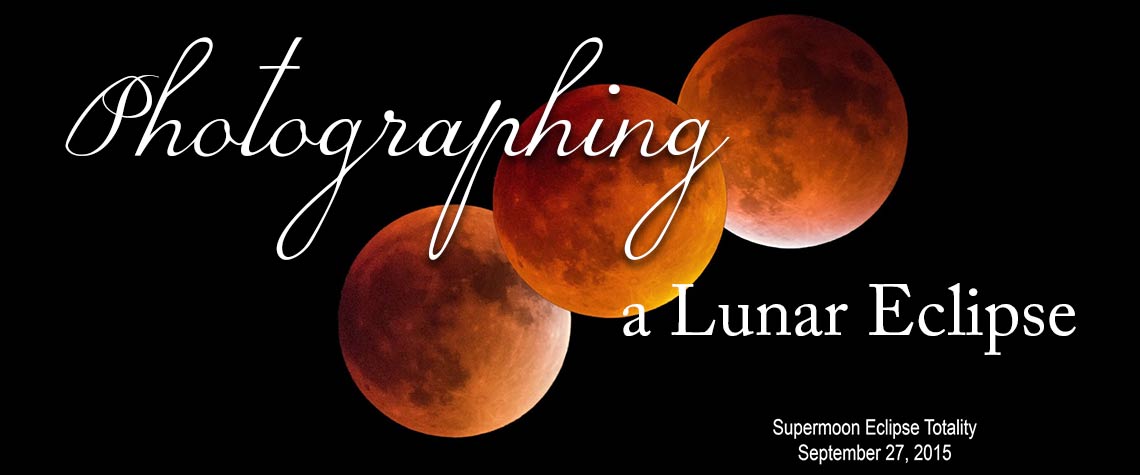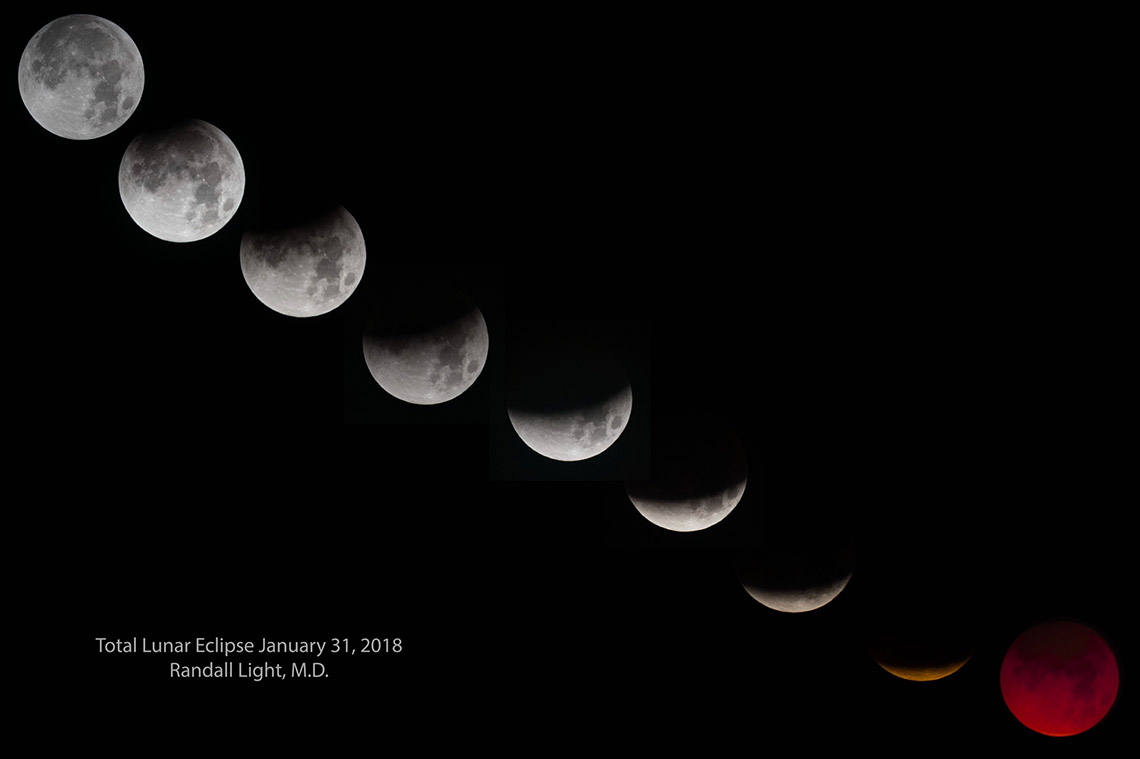Page 2


How to Photograph a Lunar Eclipse
By Randall Light, MD
A lunar eclipse occurs when the moon moves into the earth's shadow. The phases of a lunar eclipse that are observable with the naked eye and photographable are the partial eclipse, total eclipse, and maximum eclipse. On January 31, 2018, a total lunar eclipse was visible locally. Several club members gathered on the St. Joseph parking garage upper lever to watch and photograph this rare Super Blue Blood Moon. This type eclipse had not occurred in over 150 years. A super moon is a full moon that looks larger than average because it is at perigee in its elliptical orbit and is closer to the earth than average. A blue moon is a second full moon in a month. A blood moon is a fully eclipsed moon with a red color.
As the eclipse progresses camera settings are adjusted to maintain correct exposure for the moon. During totality the setting changes dramatically from daylight to very low light settings to record the dim deep color of the fully eclipsed moon.
Equipment
The equipment needed to photograph a lunar eclipse includes:
- DSLR camera with manual settings.
- Telephoto lens or small telescope of a least 300 mm focal length.
- Tripod adequate to stabilize the camera and lens.
- A cable shutter release.
Work Flow
The work flow for photographing a lunar eclipse requires both focus and judgement including:
- Arrive early
- Take photos of the full moon before the eclipse begins
- Initial daylight settings: F/8, 1/250 sec, ISO 100, and daylight white balance.
- Keep the shutter speed as fast as possible to avoid motion blur.
- Maintain a mid-histogram exposure of the moon.
- Lower the f/stop and increase the ISO as necessary to maintain correct exposure.
- Bracket your exposures.
Eclipse Totality
At totality the camera settings are pushed to the limit to capture the dim color:
- F/fully open, 1/5 sec., ISO 3200.
- Keep shooting throughout the eclipse. Take a photo every 30 to 60 sec.
- Edit your images to crop, adjust exposure, contrast, sharpness, and saturation.
The Next Total Lunar Eclipse
The next total lunar eclipse visible in the B/CS area will be January 20, 2019, with the maximum eclipse occurring at 11:12 pm CDT. There is plenty of time to practice photographing the moon on bright, moonlit nights.

Camera and settings for lunar eclipse taken on January 31, 2018: Nikon DSLR, 600mm lens, teleconverter 1.4x, 1/250 -> 1/5 sec, f/8 -> f/5.6, ISO 100 ->3200
randylightmd@yahoo.com
www.randalllight.com
